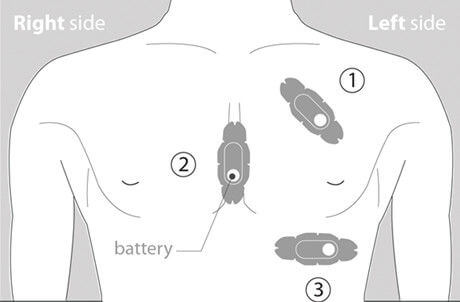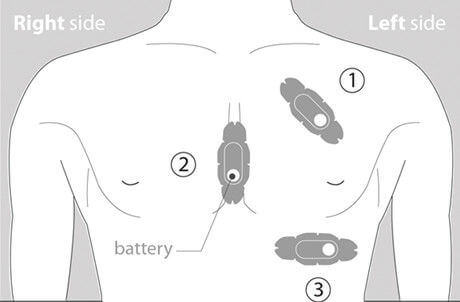Healthcare Wearable Technology: A First Look at HealthPatch
At ArcTouch, we regularly test emerging technology to help spawn new ideas for apps with niche and mainstream markets.
As a gadget geek and cycling enthusiast — and as someone who has always been curious about the relationship between good health and vital statistics — I jumped at the chance to try out the new healthcare wearable HealthPatch biosensor from Vital Connect. My goal was to understand the kind of data it was capable of producing, but I was also curious whether it was something I would want to continue using after my test.
Abouth HealthPatch biosensor
HealthPatch is NOT Fitbit. Fitbit makes it easy to track basic activity like steps and sleep patterns. HealthPatch gathers a deeper layer of information about your vitals, including heart rate and variability, respiratory rate, skin temperature, posture, and your stress.
HealthPatch is about the size of a large Band-Aid, and it attaches to your skin using replaceable adhesives. Vitalconnect recommends attaching it to one of three positions on your chest, as shown in the diagram on the right.
The hardware is not yet available broadly — and the company is trying to build an ecosystem of support from a variety of fitness and health-related apps. It’s currently supported by SweatBeatLife, which integrates data from several popular fitness apps along with the information provided by the sensor. The company also has a demo app, HealthWatch, which is what I used.
A Quick HealthPatch Review
The Good
After three days of wearing HealthPatch to measure my vitals during exercise, sleep and everything in between, I found a lot of utility. The highlights include:
- It worked right out of the box and immediately synced up with my phone; no troubleshooting was necessary.
- Initially, I used it by doing some cross-training. I compared heart-rate information with my Garmin monitor and the data was accurate.
- It was able to determine my posture, whether I was sitting, standing or leaning back. It also knew if I was lying down, or even on the ground. Pretty cool.
- The best part: Even though it is larger than some other wearable hardware I’ve seen, it was surprisingly comfortable. I forgot that I was wearing it.
Not Quite There Yet
While it’s still very early stages for the device and supporting apps, there are some barriers that need to be addressed for HealthPatch to gain acceptance.
- Vital Connect is positioning HealthPatch to appeal to doctors and heathcare professionals in addition to consumers. While I was using it, there was a lot of data in HeathWatch that I couldn’t understand — though probably useful for doctors. It once suggested I was stressed when in fact I was relaxed after a bike ride. It could have been a calibration issue. In any case, HealthPatch needs a consumer-oriented app to help translate what the vitals mean.
- The sensor attachments have three days of battery life before they need to be replaced. They cost a few dollars apiece, which could add up over a long period of time.
- HealthPatch requires a wireless connection to your phone to capture data, so if you get up and go to the other side of the house, you might lose a connection with the phone and lose that information.
Seeing the Potential in Healthcare Wearables
Healthcare wearables will have a place in our lives — whether as a niche or a mass market product — but it’s going to take some time for industry to figure it out. The best part of testing this was conjuring up a few use cases for HealthPatch or other similar devices. It was easy to come up with these examples that could deliver a lot of value to users:
- Stress feedback: What if a device sensed that your stress levels were getting high, and provided a little vibration feedback to alert you? There’s no escaping some stressful situations. But there are probably a lot of times your stress peaks from an annoying email or if you simply feel stifled by what you see on your computer screen. Being gently buzzed as a reminder to stand up, step away to go grab a cup of water (or a brown bag!) might just keep you sane.
- Elderly monitoring: LifeAlert (“Help, I’ve fallen and I can’t get up!”) has been around for nearly two decades, but there’s a big flaw with it: What if an elderly person falls and is unable to press the button? Healthcare wearables could bring medical monitoring into the 21st century. A smart device with the ability to determine a sudden change in posture could automatically text or call family members. And if there’s no response within a few minutes, it could notify emergency services.
- Coaching tool: As the buzz from the World Cup fades, it’s easy to imagine a role for healthcare wearables in sporting events. Coaches rely on feedback from their players and how tired they look to make hard decisions about substitutions. What if coaches had access to vital information to help them decide whether a player really was tired?
- Population health: Seeing your own vitals is nice. But it would be even more useful to see your vitals compared to other segments of the population. There is a lot of work being done to mine electronic health records and correlate medical conditions with demographic and behavioral data. What if an app made use of this data, and alerted you about hitting lifestyle targets? For example, it might be motivating (and possibly annoying) for your app to tell you that you could reduce your risk of heart attack by 40% if you increased your weekly cardio by another hour.

